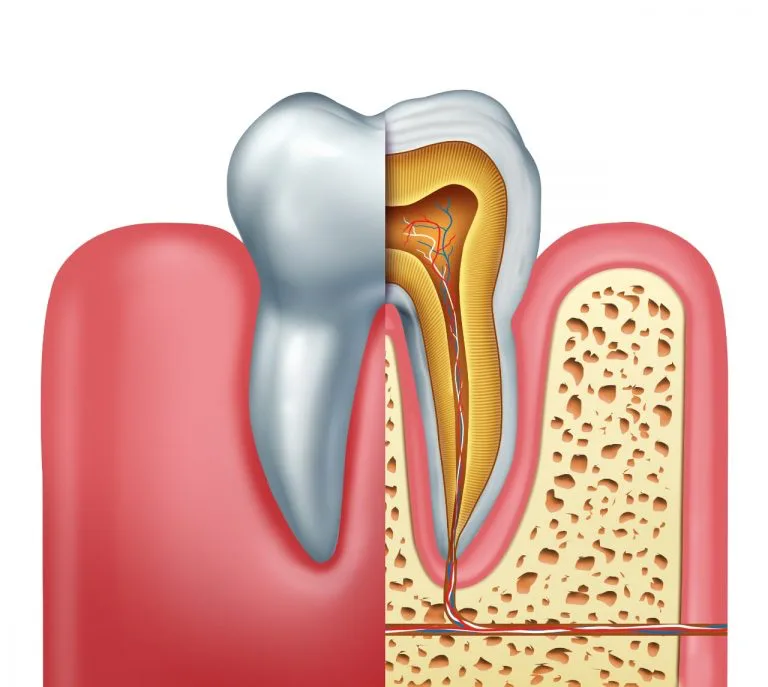When Do You Need To Root A Tooth?
The main cause of root canal is due to caries attacks (holes) that have come all the way to the pulp (“tooth nerve”). Then bacteria enter and cause permanent damage. But other causes can also cause inflammation of the nerve. Teeth with deep fillings sometimes need to be rooted. The deeper the filling, the more chance there is of nerve damage. Sometimes very sensitive teeth and teeth with cracking need to be rooted.
Root filling may otherwise be necessary if the tooth has been subjected to a trauma / stroke. Then the “nerve” can be destroyed and later invaded by bacteria. Sometimes a tooth has to be rooted because it makes sense before a crown or a bridge is to be made.

Symptoms where rooting may be necessary
If you have inflammation in the tooth, or in the jaw outside the root, you may get toothache. The pain can be of different character and intensity. Some may feel pain when eating hot / cold foods, some may experience pain such as severe icing.
From an inflamed tooth, which the patient can go without knowing, sudden and severe pain can occur. One can become swollen in the cheek and often the pain is very intense so that ordinary pain medication does not help much. The reason is that the bacteria have spread from the root canal to the bone around the root tip, forming an inflammation there. Often, after a few days, a tooth swab can form near the tooth, and this must be punctured.
Betennelsen i nerven kan også være helt symptomfri og derfor kun blir oppdaget ved et rutinemessig røntgenbilde.
Treatment with root canal filling
In order for the treatment to take place under hygienic conditions, the dentist must place a rubber cover (suitcase dam) around the tooth so that the tooth is clean, dry and isolated. The dentist must drill through the crown of the tooth to the pulp and clean the canals thoroughly so that all infected tissue is removed. The cleaning is done with the help of special instruments adapted to the width and length of the channels. When the tooth has been cleaned, the root canal is disinfected and filled with a root filling material.
The most common filling material is gutta-percha, a rubber-like material that is glued to the duct.
If root filling is not enough
Sometimes it may take some time to perform a root canal. Occasionally, the root canals are narrow and curved, which can make the work more difficult and prevent the dentist from performing a satisfactory treatment. In such cases, a small operation may be necessary to remove the inflammation around the root tip, a so-called root tip amputation.
After rooting
After root canal, there may be some pain from the tooth for a few days. These usually go away, but if the pain persists, contact your dentist.
The final result after root canal cannot be determined until after a certain time. After a one-year observation period, the dentist will take a radiograph to check if the root canal filling is still satisfactory.
A root-filled tooth does not react in the same way to pressure compared to a tooth that is not root-filled. This means that one can subconsciously overload a rooted tooth to break. Breaking it longitudinally is only a way out, and it is pulling the tooth. If the tooth is severely weakened after root canal, the dentist will often recommend the crown.
Some teeth will change color over time. The color change can be so great that a corrective treatment may be needed for aesthetic reasons. Your dentist will advise you on treatment options.
